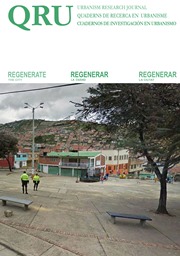La vivienda de nuevo: indagaciones urbanísticas sobre las tramas residenciales de la ciudad contemporánea
DOI:
https://doi.org/10.5821/qru.9626Abstract
From the urban perspective, housing and residential urban space, the study of the plots, the habitability of outer space, close and daily, it seems that it does not have the research attention it deserves.The city as a delimited and recognizable unit has disappeared. It is an immense periphery, composed of diverse urban fragments, with different levels of urbanity and urbanization, many of them vulnerable. Often, urban deficiencies encourage the physical and social degradation of tissue, producing large imbalances.The morphological approach relies on form, geometry and measurement, as a response to urban challenges. Sustainability is played in the measure and optimized geometry of urban things. The quality of the form is what allows the survival in time and provides the necessary flexibility to adapt to change. The urban program is now generic, with little attention to the place, to the historical moment or to the resulting morphology, and pays more attention to viability than to future sustainability. The aim is to propose a paradigm shift: an urban program oriented towards lasting development.Downloads
Issue
Section
License
Those authors who have publications with this journal, accept the following terms:
a. Authors will retain their copyright and guarantee the journal the right of first publication of their work, which will be simultaneously subject to the Creative Commons CC BY-NC-ND-4.0 recognition license that allows third parties to share the work provided that its author and its first publication are indicated in this journal, but they cannot be changed or used commercially.
b. Authors may adopt other non-exclusive license agreements for the distribution of the version of the published work (eg: deposit it in an institutional telematic archive or publish it in a monographic volume) provided that the initial publication in this journal is indicated.
c. Authors are allowed and recommended to disseminate their work through the Internet (e.g. in institutional telematic files or on their website) before and during the submission process, which can lead to interesting exchanges and increase citations. of the published work. (See The effect of open access).













